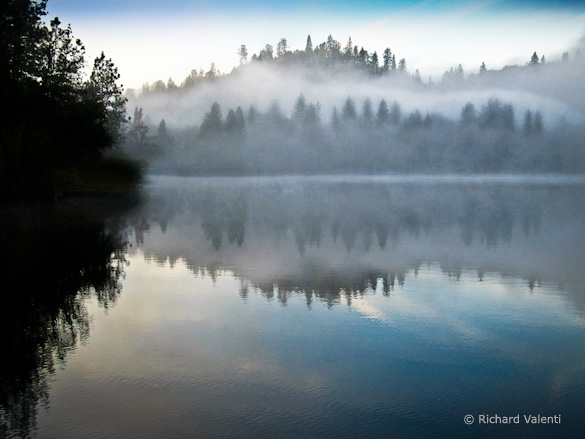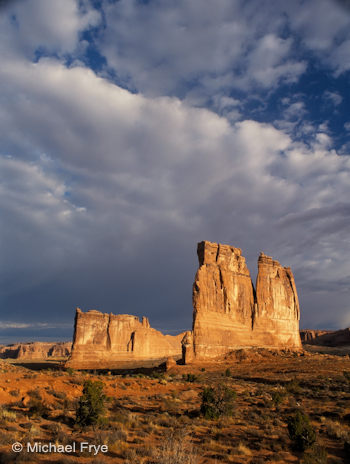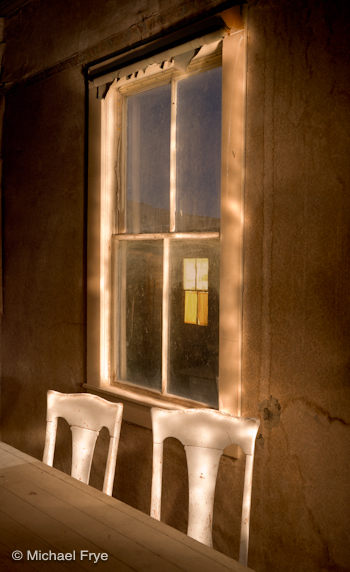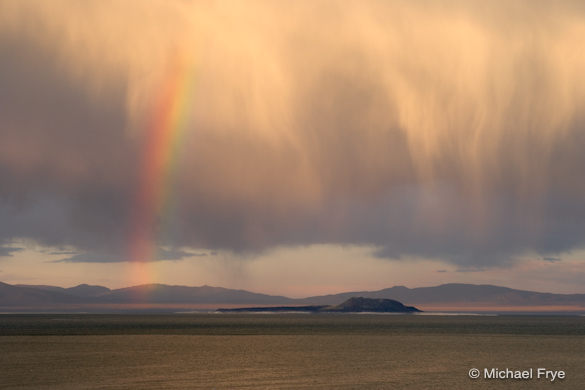Photo Critique Series: “Misty Morning” by Richard Valenti
“Misty Morning” by Richard Valenti
This week’s photograph was made by Richard Valenti at Lake Wildwood in Northern California. By having his image chosen for this critique Richard will receive a free 16×20 matted print from Aspen Creek Photo. If you’d like your images considered for future critiques you can upload them to theFlickr group I created for this purpose.
The best landscape photographs have a strong mood, and this image certainly has that. The mist, calm water, and symmetrical reflections create a beautiful, quiet, peaceful feeling. I can almost feel the morning chill.
Richard said that he was drinking his morning cup of coffee at his house along this lake when he noticed the mist. Since the sun was about to crest the ridge he didn’t have time to get his DSLR, so he grabbed his point-and-shoot (Canon PowerShot SX200IS) and ran down to the dock to compose this photograph. As he put it, “no full frame DSLR, no tripod, not shot in RAW; just a point and shoot set to automatic ‘program’ mode! I did ‘see and pre-visualize’ what I wanted the final image to be and carefully composed this image. I was only able to get two shots off before the sun broke through the tree line and totally changed the mood of the scene before me.”
Timing is everything in landscape photography. It’s better to capture a great moment like this with a point-and-shoot than not capture it at all.
Overall the composition is pretty clean and simple. I like the shapes created by the distant ridge and it’s reflection. There are lots of interesting details, like the two layers of trees on the far hill separated by fog, and the ripples in the water. The horizon is above the center, emphasizing the foreground water more than the sky, which I think was a good choice here, as the subtle textures in the water are more interesting than the smooth sky.
One thing I could quibble with is the patch of dark trees along the left edge. Sometimes a dark area adds needed contrast to an otherwise flat scene, but in this case I think it throws the image off balance; without any other dark areas in the frame the left side of the photograph feels heavily weighted compared with everything else. And although usually our attention is drawn to light areas, since this photograph is predominantly light our eyes get pulled toward that dark mass on the left and away from more interesting areas spots. I think this image has enough contrast and mood without that left side, but what could be done about it?
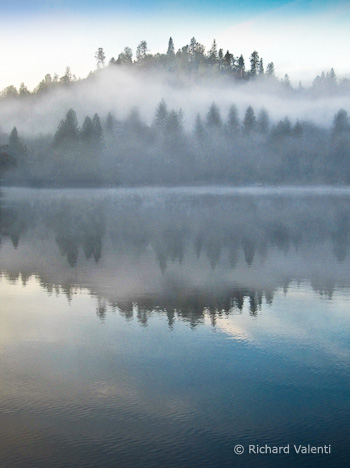 One solution might have been moving the camera position to the right, but since Richard was standing at the end of a dock that probably wasn’t possible. Perhaps he could have pointed the camera more to the right, but I don’t know what was over there—maybe something distracting. As we see it here, just cropping the left side makes this image feel off balance. But cropping both sides and creating a vertical composition does seem to work—it’s simpler, and emphasizes the most interesting things in the frame: the water, central trees, and mist. However, it’s more abstract, with less sense of place. This is a tough call for me; I think I prefer the cropped version, but I’d have to live with it for awhile.
One solution might have been moving the camera position to the right, but since Richard was standing at the end of a dock that probably wasn’t possible. Perhaps he could have pointed the camera more to the right, but I don’t know what was over there—maybe something distracting. As we see it here, just cropping the left side makes this image feel off balance. But cropping both sides and creating a vertical composition does seem to work—it’s simpler, and emphasizes the most interesting things in the frame: the water, central trees, and mist. However, it’s more abstract, with less sense of place. This is a tough call for me; I think I prefer the cropped version, but I’d have to live with it for awhile.
What do you think of the dark area along the left edge? Do you like the vertical crop, or prefer the original version? As always, I look forward to hearing your thoughts.
Despite the camera, the image quality seems pretty good, although there’s a strange color shift in the sky—purple on the left, cyan on the right—and the same colors are reflected in the water. This could probably be corrected in Photoshop with either a Hue/Saturation or Selective Color Adjustment Layer, possibly in conjunction with a layer mask.
Viewed larger some noise is also apparent among the trees along the far shore. Smaller sensors are more prone to noise, and it’s likely that the original JPEG was oversharpened in the camera, further emphasizing the noise. On most cameras the standard sharpening setting is too high, and it’s almost impossible to fix this later, while it’s easy to add more sharpening in software if necessary, so I always recommend setting the sharpening to its lowest setting if your camera allows it (many point-and-shoots don’t), . These in-camera sharpening settings only affect JPEGs, so if you only shoot in Raw don’t worry about it, but if you ever use JPEG mode it might be a good idea to figure out how to adjust the sharpness and turn it down.
While I have some reservations about the dark area along the left side of this photograph, I love the misty mood, and I’m glad Richard captured it, even with a point-and-shoot camera.
Thanks Richard for sharing your image! You can see more his work on Flickr.
If you like these critiques, share them with a friend! Email this article, or click on one of the buttons below to post it on Facebook or Twitter.
As part of being chosen for this week’s critique Richard will receive a free 16×20 matted print courtesy of the folks at Aspen Creek Photo. If you’d like your images considered for future critiques, just upload them to the Flickr group I created for this purpose. If you’re not a Flickr member yet, joining is free and easy. You’ll have to read and accept the rules for the group before adding images, and please, no more than five photos per person per week. I’ll be posting the next critique in two weeks. Thanks for participating!

